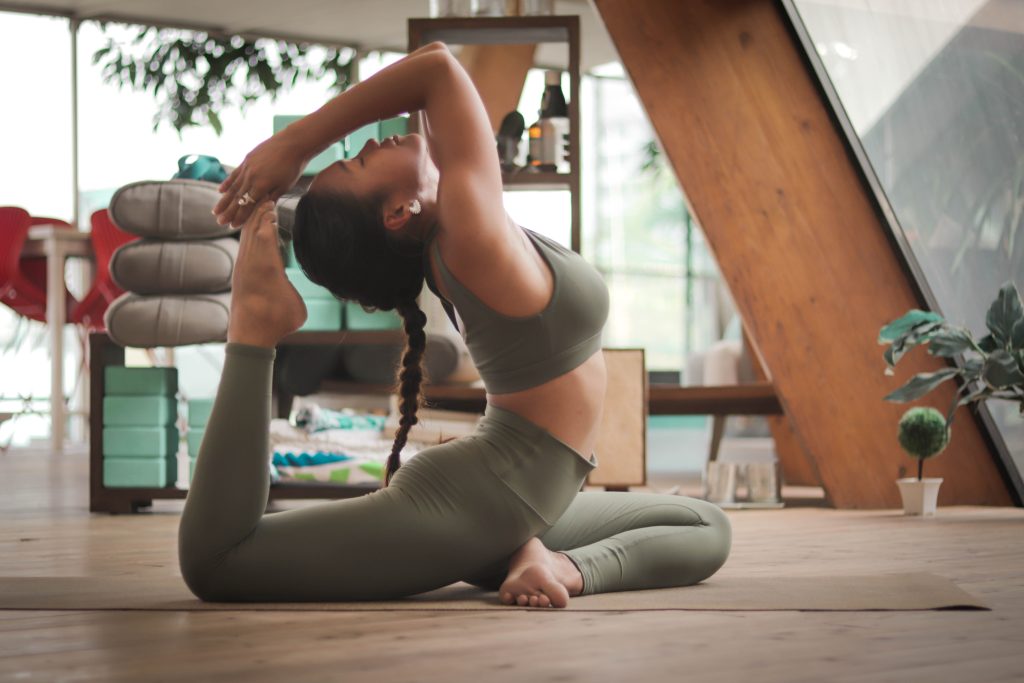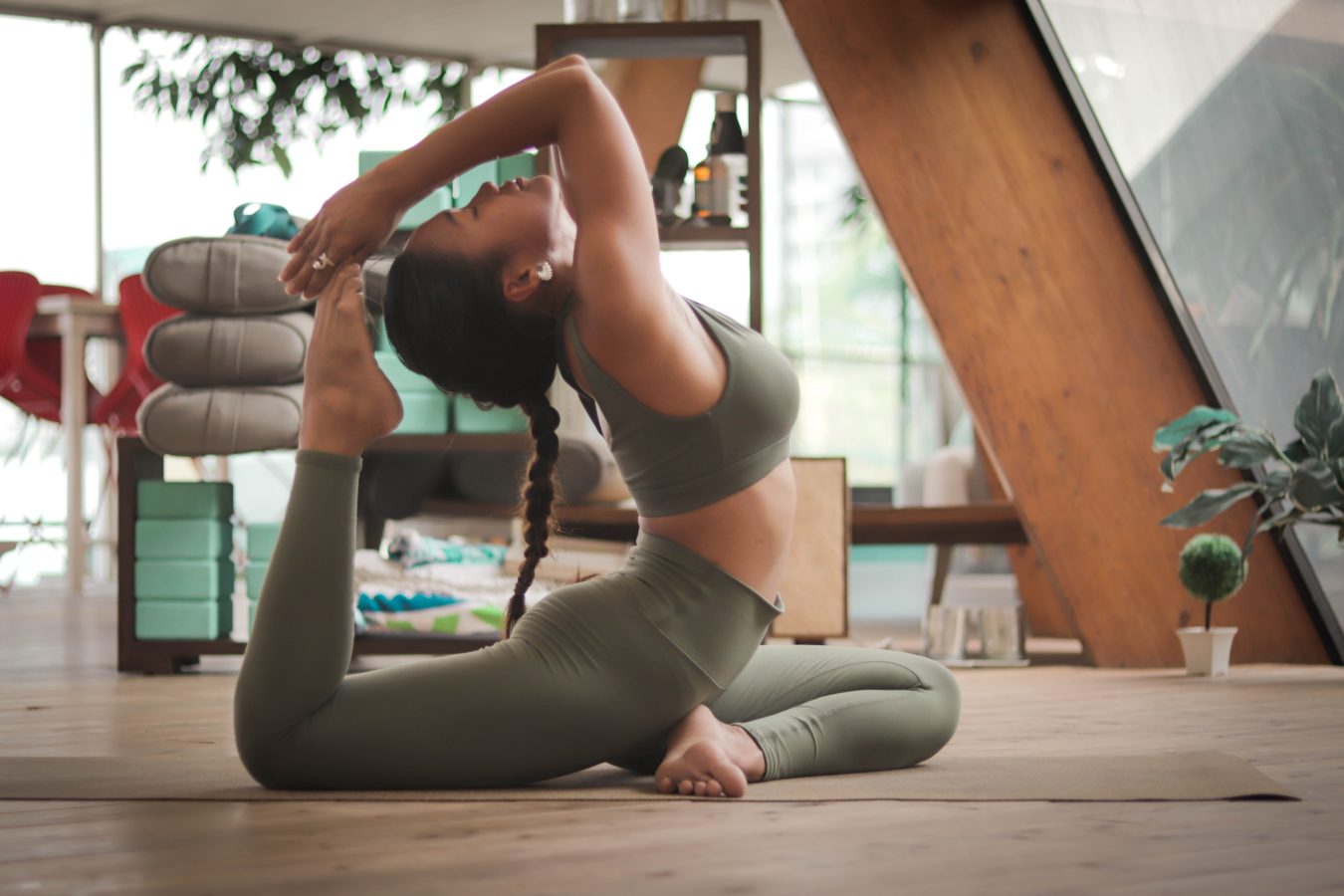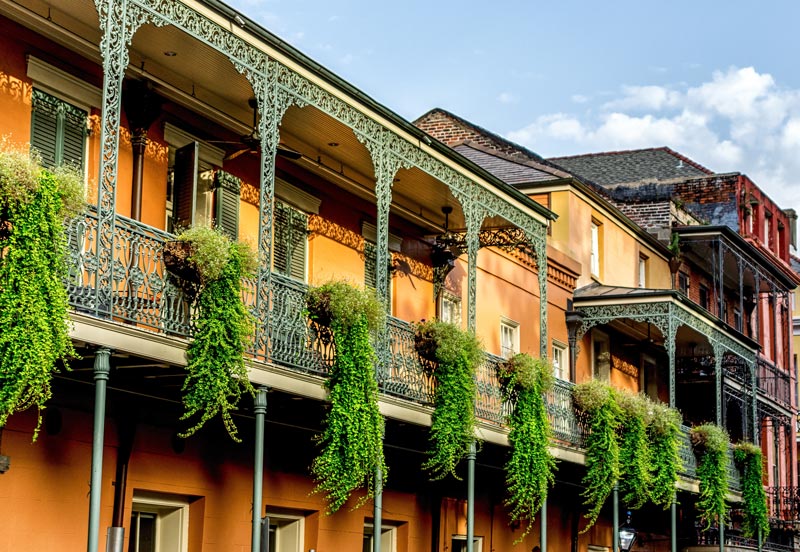Sightseeing and Ways to Stay Fit for Active Visitors

If you plan to stay active and keep fit while you’re visiting New Orleans, the many versatile ways to explore the French Quarter and nearby areas like City Park, Bayou St. John, and the Marigny could mean anything from kayaking along Bayou St. John to doing yoga at the Cabildo. Depending on your stamina and interests, these indoor and outdoor suggestions, below, can’t be beat if you’re looking for a self-powered, self-guided adventure throughout the city or just need to squeeze in a quick workout while on the road.
Bike tours and rentals
New Orleans is getting more bike-friendly with recently repaved roads, new dedicated and shared bike lanes, and increased bike safety awareness. Whether you’d prefer to strike out on your own or be guided in a group, the local nonprofit and bike safety advocate Bike Easy has a city bike map to help you navigate. Plus, no hills! If you do just want to rent a bike and be on your own, we recommend Blue Bikes, an inexpensive rideshare option that came to New Orleans relatively recently.
Most tour companies that offer guided bike tours will also let you rent a bike for several hours and up to several days, and most of the time helmet, bike lock, maps, and “concierge support” are included in the rental fee.
Crescent City Bike Tours offers several bike tours that focus on New Orleans history. There are nighttime tours, seasonal tours, and tours in French. You can also rent a bike for half a day, the whole day, and up to a week.
Free Wheelin’ Bike Tours last three hours on average, and cover about 10 miles each. The Creole & Crescent tour includes the French Quarter and the Marigny; the Beyond the Bourbon Street tour takes you through the Marigny and the Bywater. The company also has rentals for both kid and adult cruisers (multi-day rental fees vary; please check the website).
Nation Tours offers Segway tours. There are several time slots throughout the day, and you can book a New Orleans Experience tour, the Historic French Quarter tour, or a Haunted History tour.
Drop-in exercise classes
Exercise surrounded by opulence at the New Orleans Athletic Club on N. Rampart Street on the edge of the Quarter. Established in 1872, the club has seen quite a few famous people, from Tennessee Williams and Huey Long to the contemporary Hollywood celebrities who film here. As one of the oldest athletic clubs in America, NOAC boasts a pool, sauna, steam room, a well-stocked library, spa, coffee stations, and even a bar. A daily drop-in includes access to group exercise classes, or come as a member’s guest. Bring your ID and hotel room key to register.
Downtown Fitness Center has locations at the New Orleans Healing Center in Bywater and on the third floor at the Shops at Canal Place in the French Quarter. Visitor passes are for one, two, or three days; classes include Zumba, yoga, pole fitness, and aerobics.
Yoga
“For residents and travelers at all levels of practice,” Yoga at the Cabildo classes are held at the historic Cabildo on Jackson Square on Saturdays at 9 a.m. History meets fitness in a sun-filled gallery inside a 1700s Spanish colonial building, now housing an excellent museum.
Wild Lotus Yoga is located Uptown. It offers sliding-scale community classes like family yoga, alignment, and yoga for new moms. Swan River Yoga is popular among the locals and offers restorative, beginner, and prenatal classes at its Mid-City location on Canal Street (ask about a single-class drop-in rate).
Paddlesports
The two-hour bayou tour by Kayak-iti-Yat is a good fit for first-time kayakers to explore Bayou St. John with not too much athletic commitment. It focuses on history, community and architecture; and, even though the tour will take you through residential areas, you’ll get to spot some wildlife like birds and turtles.
Massey’s rentals include canoes and kayaks, both solo and tandem. You can rent one for a few hours to take out on the bayou, or for a weeklong fishing expedition out of town. If you need a kid kayak, Bayou Paddlesports offers those along with adult ones.
Finally, the New Orleans City Park offers good deals for bike and boat rentals, morning to sunset, weather permitting. Since personal boats are not allowed in the City Park’s historic bayous and lagoons, your best bet is to rent. The four miles of the Park’s bike paths can take you from Bayou St. John to Lake Pontchartrain, plus there are additional trails around the lake and on festival grounds.
Book a stay at our historic French Quarter boutique hotel, right in the epicenter of all of the action!


